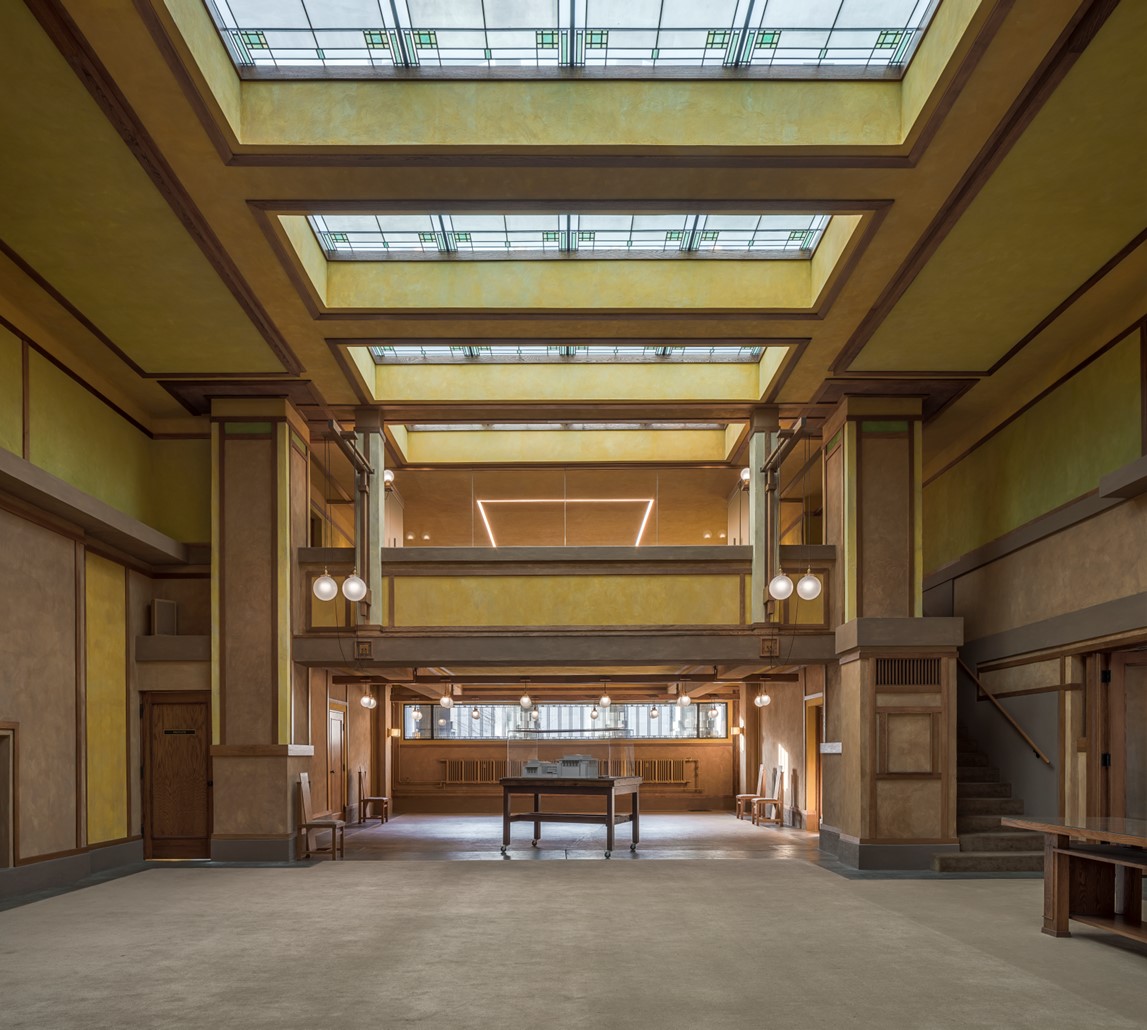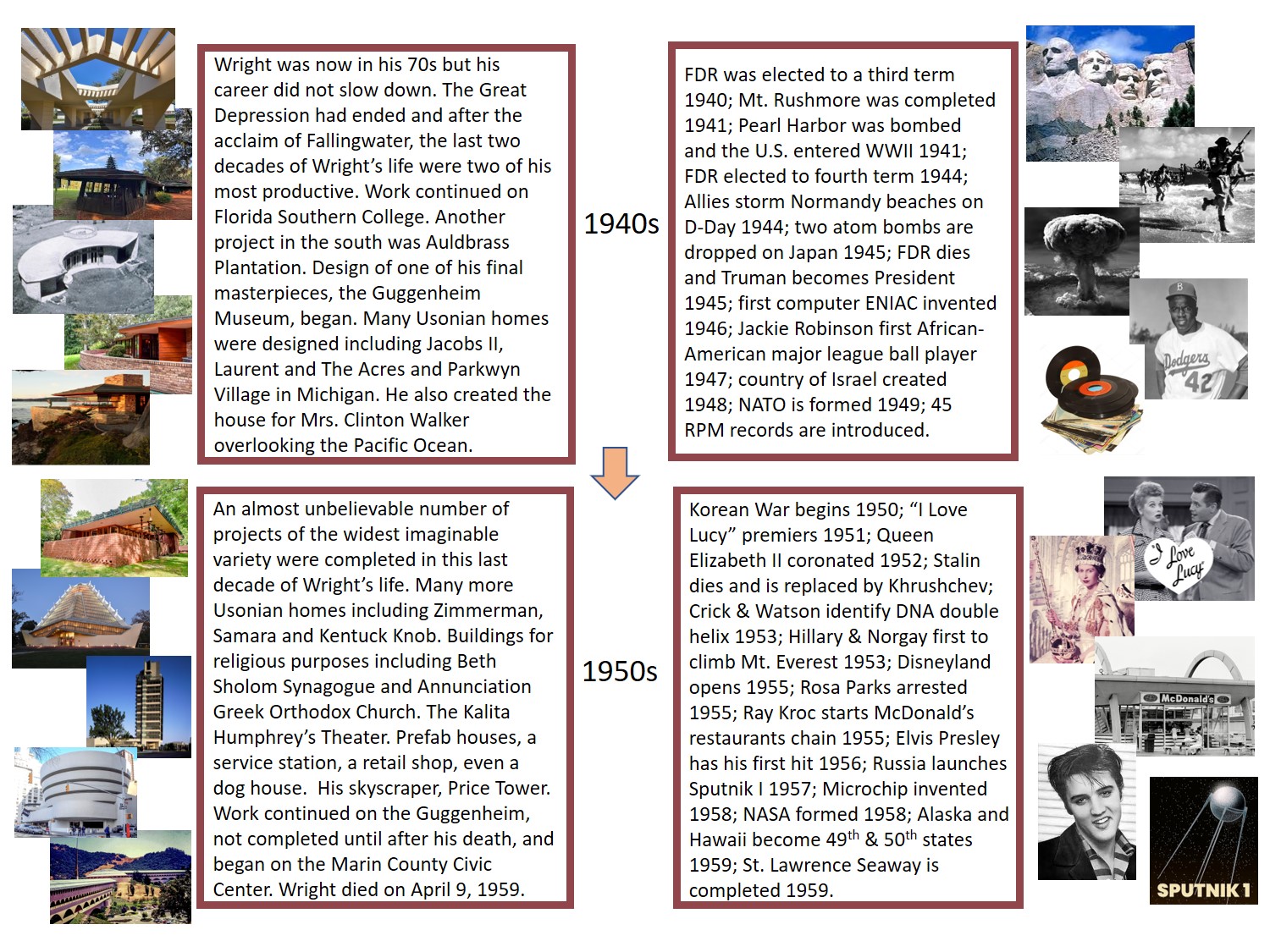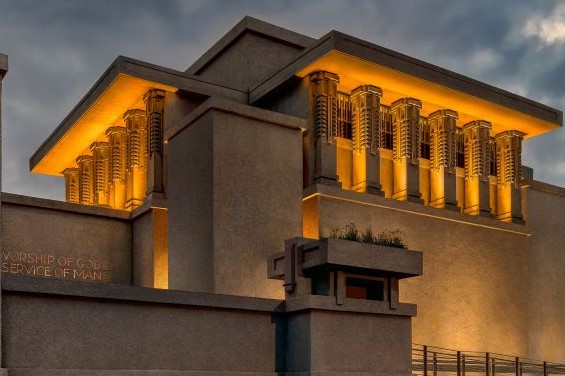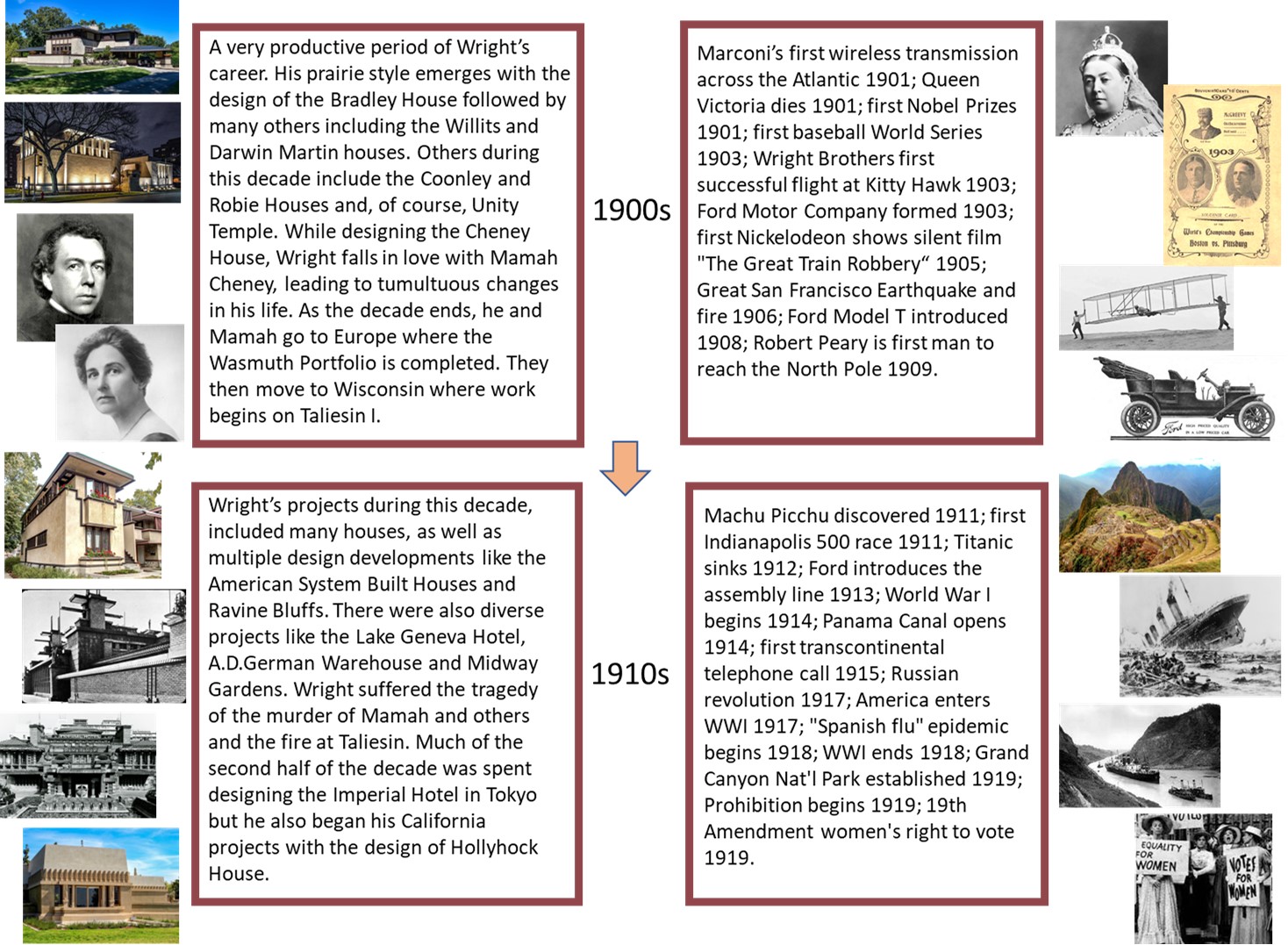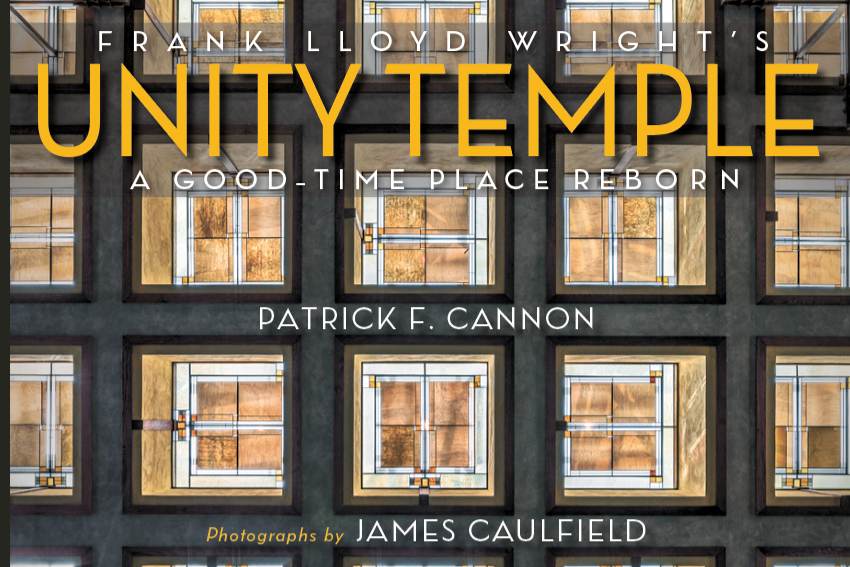A Few Thoughts on The Oak Park Studio of Frank Lloyd Wright, by Lisa Schrenk
As a volunteer interpreter at the Home & Studio, I am always interested in adding to my knowledge about the building and Wright’s time there. When I learned about Lisa Schrenk’s book being published earlier this year and found out that the author had been the educational director for the Frank Lloyd Wright Home & Studio Foundation (now the Frank Lloyd Wright Trust) from 1988 to 1992, I put the book on my list as a suggested Father’s Day gift. I also viewed Ms. Schrenk’s virtual book talk in June hosted by the Frank Lloyd Wright Building Conservancy and it was obvious that she had done extensive research to write the book. Therefore, I was very pleased when I received it from my daughter.
 While there is much in the book that I had learned from my volunteer training or from other sources, there was even more that I had not. The author does a great job of condensing a vast amount of information (there are 40 pages of endnotes) into a fairly concise book that is well organized into chronological chapters. She summarizes Wright’s early life and his employers and where he worked in Chicago prior to opening the Oak Park Studio, with emphasis on what may have prompted the move to the suburbs and influenced the Studio design. The Studio years are broken into three periods: early (1898 – 1902), middle (1903-1905), last (1906-1909), bookmarked by chapters dealing with opening and closing of the Studio. This helps the reader follow the arc in this phase of Wright’s career from the formative years, through the groundbreaking designs created in the Studio, to the tumultuous events leading to the Studio being closed. A significant portion of the chapter about the last years is devoted to Unity Temple. She states, “The design and construction of Unity Temple almost directly coincides with the time between Wright’s first two trips abroad. On 24 May 1905, ten days after he returned from Japan, the members of Unity Church voted to build a new home. Eleven days later lighting struck the current church’s steeple, setting fire to the building and making construction a necessity. The dedication of the new church took place on 26 September 1909, three days after Wright’s departure from Oak Park for Europe.”
While there is much in the book that I had learned from my volunteer training or from other sources, there was even more that I had not. The author does a great job of condensing a vast amount of information (there are 40 pages of endnotes) into a fairly concise book that is well organized into chronological chapters. She summarizes Wright’s early life and his employers and where he worked in Chicago prior to opening the Oak Park Studio, with emphasis on what may have prompted the move to the suburbs and influenced the Studio design. The Studio years are broken into three periods: early (1898 – 1902), middle (1903-1905), last (1906-1909), bookmarked by chapters dealing with opening and closing of the Studio. This helps the reader follow the arc in this phase of Wright’s career from the formative years, through the groundbreaking designs created in the Studio, to the tumultuous events leading to the Studio being closed. A significant portion of the chapter about the last years is devoted to Unity Temple. She states, “The design and construction of Unity Temple almost directly coincides with the time between Wright’s first two trips abroad. On 24 May 1905, ten days after he returned from Japan, the members of Unity Church voted to build a new home. Eleven days later lighting struck the current church’s steeple, setting fire to the building and making construction a necessity. The dedication of the new church took place on 26 September 1909, three days after Wright’s departure from Oak Park for Europe.”
It is well known that Wright continually remodeled and redecorated the Home & Studio. We refer to the building during tours as Wright’s architectural laboratory. In this book, the frequency and extent of those changes are brought even more into focus, particularly in the Library. It appears that Wright had a near obsession with making sure this space always conformed with his latest ideas in style. I learned something about this room from the book that I had not come across before. Coincidentally it answered a question that a guest had asked just a few weeks before about recessed spaces along the ceiling between the clerestory windows. After his trip to Japan in 1905, Wright raised the roof of the Library and added a second level of clerestory windows. While these windows added natural light to the room, they made the small, octagonal space “feel like a silo”, leading him to curve the ceiling downward covering the upper set of windows. An interesting example of the trial and error nature of some of Wright’s alterations.
The book continues past Wright’s departure for Wisconsin in 1909, discussing the alterations in 1911 to convert the Studio into an apartment for Catherine and the younger children, dividing the Home into two apartments and adding the garage with another apartment above. It even goes on to discuss owners and residents of the property after Catherine, the children and Wright’s employees departed in 1920. I was aware of the complexities of the property ownership and Ms. Schrenk does a nice job of covering this issue, including Darwin Martin holding the title for years due to his unpaid loans to Wright. The sad circumstances during these years are difficult to imagine when you tour the restored building today. The restoration is briefly addressed in the book as well.
All of this information is a great resource to understand the full evolution from a modest home, to a home with an architectural studio attached, to a collection of apartments, to a museum devoted to the first 20 years of Wright’s career. But, to me, the most interesting aspect of the book goes beyond the building itself. Paraphrasing the last paragraph of the book’s preface; it delves into the “tremendous interactions between Wright and his employees and clients” and “the relationship of Wright’s home and family next door to his work environment”. To the extent possible with what appears to be every available source of reference material, the author creates a vivid picture of the work environment in the Studio that started as collaborative and nurturing, transitioned to more of an employer-employee relationship and ended up largely acrimonious between Wright and a number of the architects that had worked with him to achieve many of the brilliant projects executed between 1898 and 1909, including Unity Temple. The book identifies 26 architects that had some level of involvement with Wright and his Oak Park Studio. A timeline is included that illustrates the period of time each one spent there, along with brief biographies. This information was very enlightening. Now when I guide guests through the Studio I see it with new eyes, more aware of all the contributors to the work attributed to Wright, as well as the turmoil that resulted from the clash of strong personalities and Wright’s decision to leave his wife and Oak Park.
A nice selection of drawings and photos are included throughout the book to support the text. The Appendix includes a complete list of projects carried out in the Oak Park Studio, along with the text of two interesting documents; a 1910 letter from Wright to his mother while he was in Fiesole, Italy that is a lengthy attempt to explain and justify his actions, and a sales brochure for the property from sometime after Catherine left.
In summary, Lisa Schrenk’s book is a wonderful addition to the vast library of information about Frank Lloyd Wright’s life and work. In particular, for those interested in the formative years he spent in Oak Park, the author does a wonderful job fleshing out the day-to-day working relationships of Wright with everyone that worked with him.
Review by Ken Simpson


